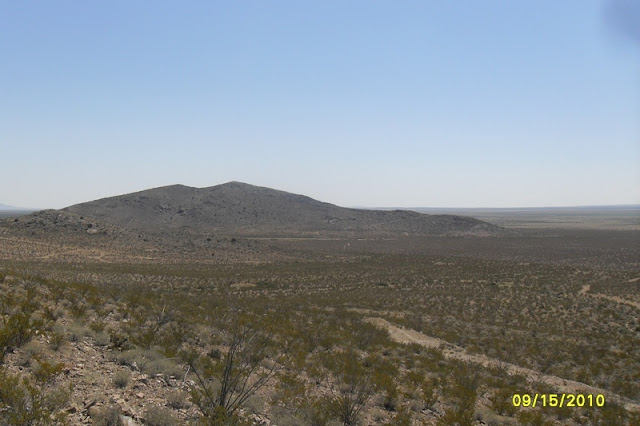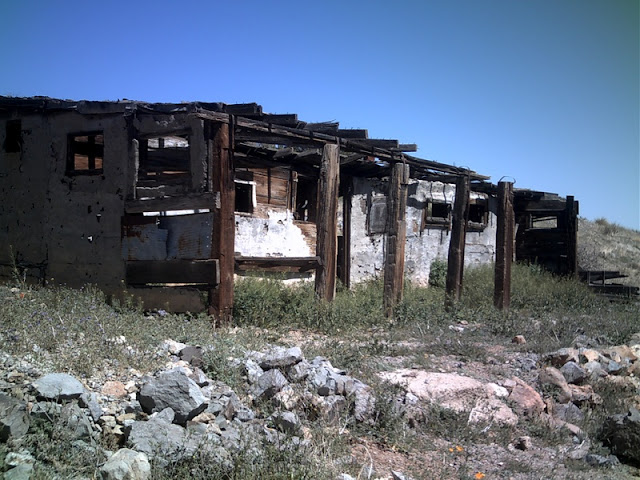For reasons unknown, two young sisters set off on a trek through the desert wilderness south of Deming. This story resembles the plot of the 2002 Australian film directed by Phillip Noyce; Rabbit Proof Fence. The journey of these two girls was not nearly as expansive as the aboriginal girls in the movie, but nonetheless the older girl survived for five days in a wilderness that was not any less hostile or isolated than the Australian outback.
Sept. 7th 1906 Deming Graphic
Runaways!
On Thursday Aug. 30th, two little Mexican girls aged respectively 8 and 3 daughters of Juan Diaz disappeared from their home. The mother and some of the neighbors scoured the town all that night in a vain search for the missing children. Next morning the civil authorities were notified and a systematic search was inaugurated, resulting in the finding of the younger child about four miles south of town and which indicated that the children were attempting to go to their father who was then at work in the Florida mountains twenty miles away. The search was then extended, the line reaching out eighteen or twenty miles. At a point about eighteen miles out, tracks of the child were found but with night coming on the search had to be abandoned. On the morning of Sept. 3rd. soon after daylight the trail was taken up and the dim footprints of the fleeing child were soon discovered. To elude the officers, the child then hid under the mesquites running and dodging among the bushes, in this manner she succeeded in evading her rescuers until 10 o'clock when she was overtaken and captured. For nearly five days the child had subsisted upon nothing but prickly pears and when found was well, but her hands and feet her face, mouth and tongue were full of cactus thorns.
Two very different reports involving shotguns from the archives of the Deming Graphic. Both are tragic, one an accident and the other deliberate. One happened just as a young boy was on the cusp of manhood and the other ended the pain and suffering of a man who had lived a long life. Shelby Phillips overcame the loss of his right hand to become a prominent and successful rancher in Luna County.
Aged Man Ends His Sufferings
March 15th 1906 Deming Graphic
Last Sunday afternoon about 4 o'clock the people of Deming were greatly shocked on learning that Robert Redding aged 70 years, had committed suicide by shooting himself through the heart with a shot gun. No one witnessed the terrible deed. The full charge passed through his body as large as a man's fist. The whole heart was shot away and the man's body presented a ghastly sight when found. Redding had for the past year conducted a restaurant near the Union depot. Deceased, who had long suffered from asthma and heard to remark, Sunday morning, "I'll never put in another night of suffering like I did last night"
His wife becoming alarmed and knowing that her husband had on several occasions threatened suicide, left the house on Sunday afternoon for a short time to secure some one to spend the night with her husband. Upon her return the body of the unfortunate man was found lying on the floor, dead, with a shot gun and poker lying nearby. The supposition is that Redding placed the muzzle of the gun to his breast over the heart and pulled the trigger with the poker. Redding is an old settler of this section, having come here some thirty five years ago and has resided in Luna and Grant counties ever since.
Runaways!
On Thursday Aug. 30th, two little Mexican girls aged respectively 8 and 3 daughters of Juan Diaz disappeared from their home. The mother and some of the neighbors scoured the town all that night in a vain search for the missing children. Next morning the civil authorities were notified and a systematic search was inaugurated, resulting in the finding of the younger child about four miles south of town and which indicated that the children were attempting to go to their father who was then at work in the Florida mountains twenty miles away. The search was then extended, the line reaching out eighteen or twenty miles. At a point about eighteen miles out, tracks of the child were found but with night coming on the search had to be abandoned. On the morning of Sept. 3rd. soon after daylight the trail was taken up and the dim footprints of the fleeing child were soon discovered. To elude the officers, the child then hid under the mesquites running and dodging among the bushes, in this manner she succeeded in evading her rescuers until 10 o'clock when she was overtaken and captured. For nearly five days the child had subsisted upon nothing but prickly pears and when found was well, but her hands and feet her face, mouth and tongue were full of cactus thorns.
Two very different reports involving shotguns from the archives of the Deming Graphic. Both are tragic, one an accident and the other deliberate. One happened just as a young boy was on the cusp of manhood and the other ended the pain and suffering of a man who had lived a long life. Shelby Phillips overcame the loss of his right hand to become a prominent and successful rancher in Luna County.
A sad accident
Jan 5th 1906 Deming Graphic
While out shooting quail at the ranch of his father, Shelby, the sixteen year old son of James Phillips accidentally shot himself last Friday with a No.12 Winchester shot gun loaded with No.6 shot. While walking over a slick rock the young man slipped and fell, striking the hammer on the rock and breaking it off, thereby discharging the gun. The whole charge took effect in his right forearm, tearing away the thumb and many bones of the wrist. The day was cold and stormy and the thirty mile ride to town, though made as easy as possible, together with the great loss of blood, would have been a severe trial on the strongest man.
Though the hand was in very bad shape an effort was made to save a part of it, but on Sunday night it was seen that the force of the charge had destroyed so much of the arm that further effort to save any part of it would result in death to the boy. Drs. Swope and Steed then amputated the arm just above the elbow. While the great strain on his system for a time seemed more than he could bear and his life seemed almost despaired of, at last a rugged constitution asserted itself, and he is now on the high road to recovery. Though beginning the new year with so great a loss, it may be some consolation to the young man that many of our greatest men have been similarly afflicted. Shelby has the reputation of being an exceptionally good and bright boy, and with these two sterling qualities there is nothing he may not yet accomplish in life.
Aged Man Ends His Sufferings
March 15th 1906 Deming Graphic
Last Sunday afternoon about 4 o'clock the people of Deming were greatly shocked on learning that Robert Redding aged 70 years, had committed suicide by shooting himself through the heart with a shot gun. No one witnessed the terrible deed. The full charge passed through his body as large as a man's fist. The whole heart was shot away and the man's body presented a ghastly sight when found. Redding had for the past year conducted a restaurant near the Union depot. Deceased, who had long suffered from asthma and heard to remark, Sunday morning, "I'll never put in another night of suffering like I did last night"
His wife becoming alarmed and knowing that her husband had on several occasions threatened suicide, left the house on Sunday afternoon for a short time to secure some one to spend the night with her husband. Upon her return the body of the unfortunate man was found lying on the floor, dead, with a shot gun and poker lying nearby. The supposition is that Redding placed the muzzle of the gun to his breast over the heart and pulled the trigger with the poker. Redding is an old settler of this section, having come here some thirty five years ago and has resided in Luna and Grant counties ever since.












































